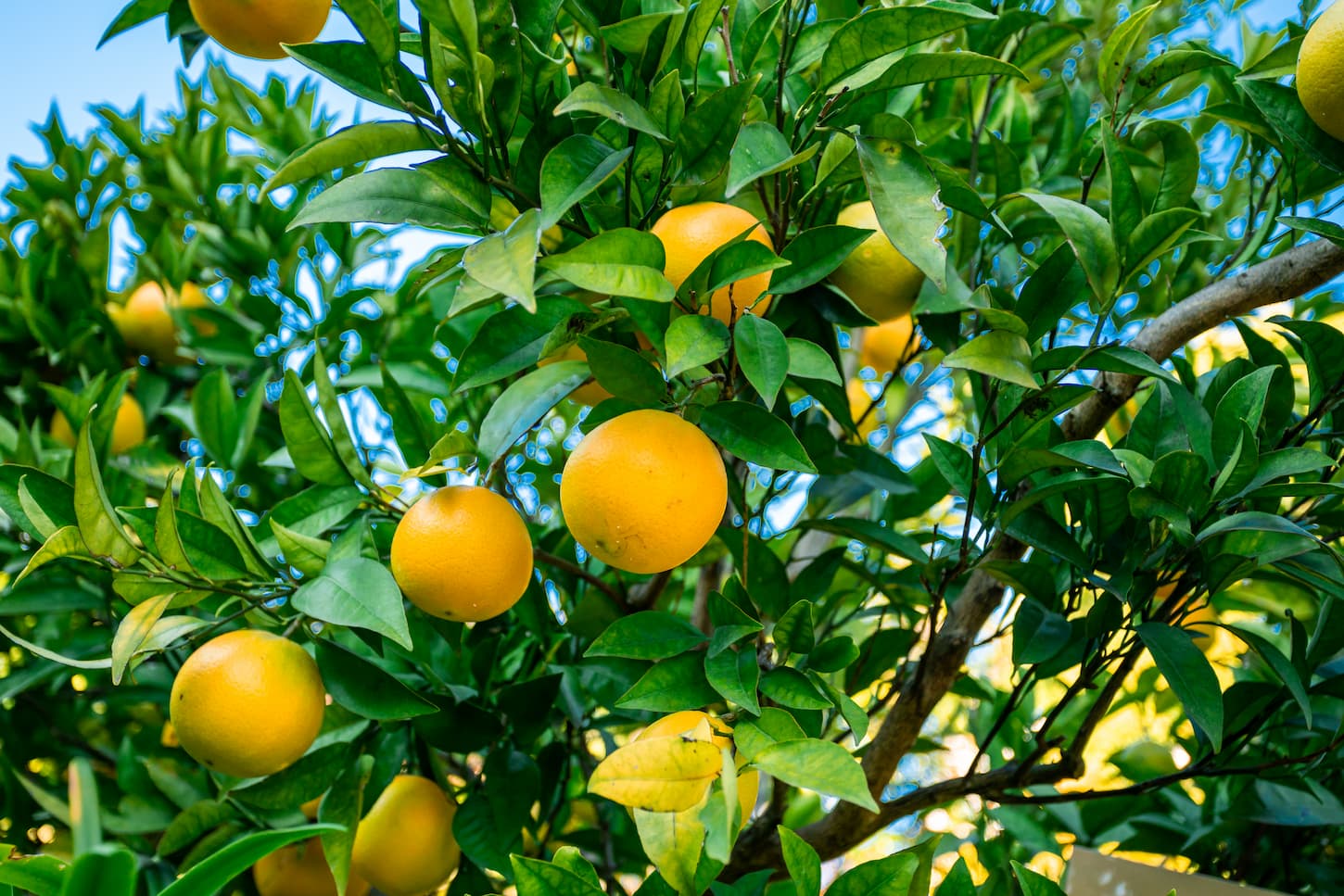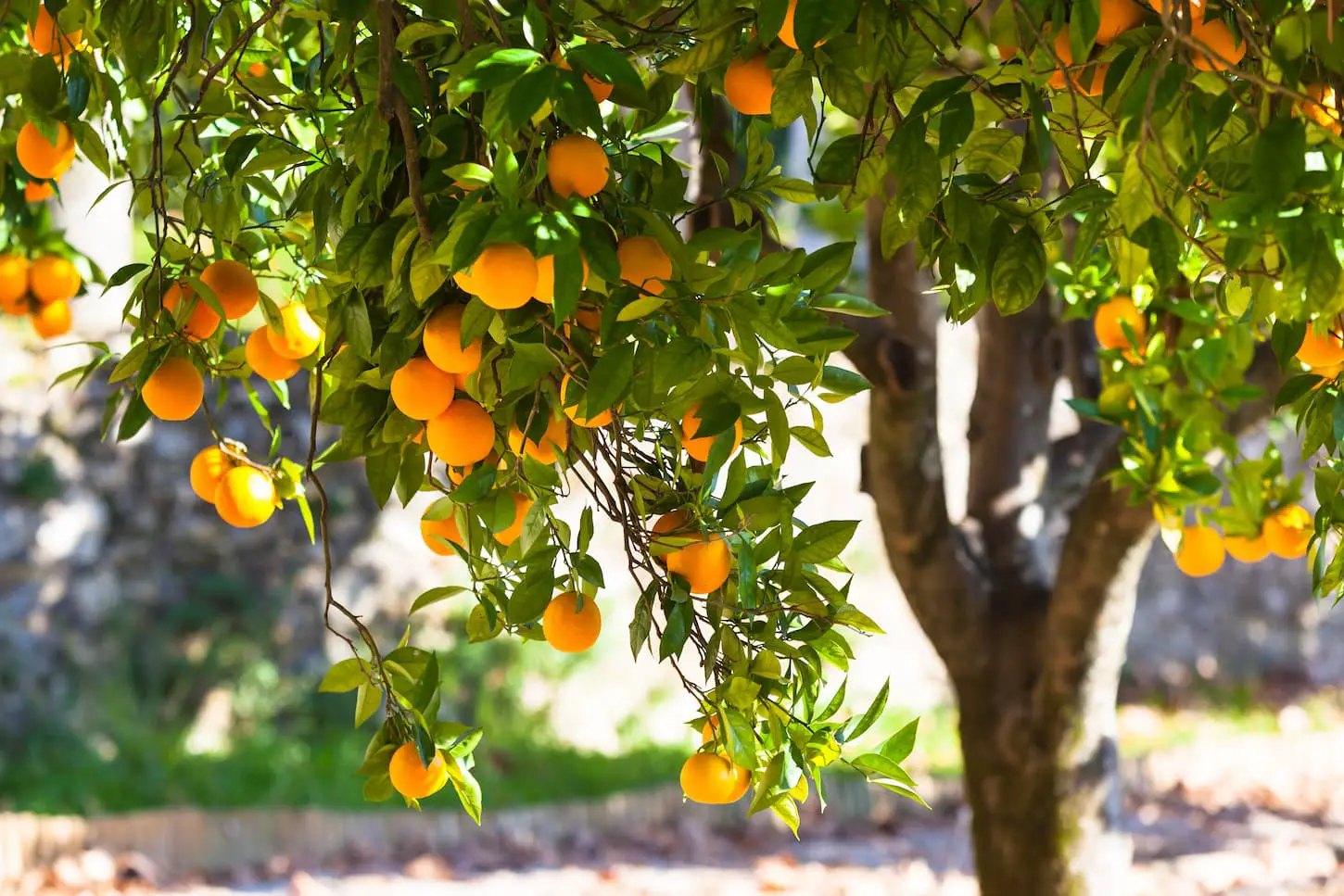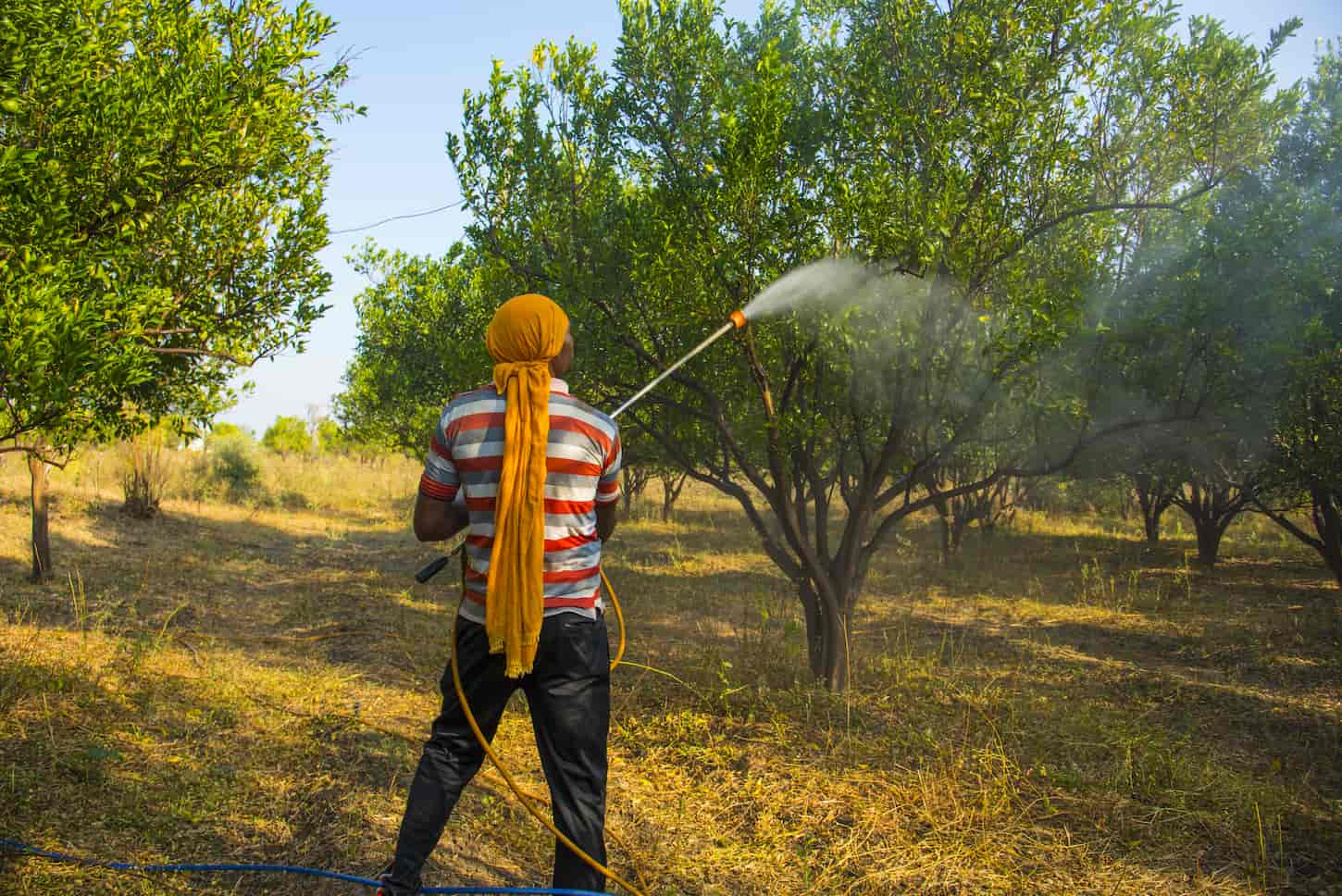Oranges are a delicious fruit that everyone loves. Today, we’re going to talk about their leaves, how to identify them, what can be learned about oranges by their leaves, and what their uses are apart from the fruit.
Orange tree leaves can be used for several things, such as wrapping meats and seafood to steam, grill, or roast. Cheeses can be wrapped for a delicious snack. They can also be used for zest and add a citrus flavor when used with food.
Easy to grow, perfect for juice, and they can turn a simple recipe into a chef’s meal. First of all, we need to know what they look like, so keep reading and learn with us!

How Do You Identify an Orange Tree?
The orange tree can be identified by characteristics like the shape, type of leaves, and flowers. If the tree is seen at the right time, the fruit is visible – it will be pretty easy to identify.
Usually, they are medium-sized trees and can get up to 27 feet tall, so keep that in mind if planning to grow one in the backyard. The tree has a rounded shape with thin branches and a lot of leaves.
How Do You Identify Orange Tree Leaves?
The color of the orange leaf is a light green with a texture that stays the same throughout the entire length. One important thing about them is the smell – when sniffed, there is a citrus odor.
Orange leaves are important to identify because they contain a lot of information. They have medium-size leaves with a lengthy oval shape.
Another important characteristic to observe is the orange tree flowers, which are pretty simple to identify with small white petals. Last but not least, the fruit is easy to identify if the tree is found during the winter.
Since we are focusing on orange tree leaves, let’s see why they are so important.
What Do You Do with Orange Tree Leaves?
Orange tree leaves are commonly used in recipes to bring a citrus flavor to food, transporting us to different parts of the world when eating.
Most people don’t know this, but some citrus leaves are edible, and the orange tree leaf is one of them. They pair well with chicken, roasted pork, and seafood and can also be used to make sauces or curries.
There are countless possibilities, depending on the type of orange used, so let’s see what the differences are.
How Can I Tell What Kind of Orange Tree I Have?
An orange tree’s basic attributes can be identified by its size, shape, branches, leaves, flowers, and fruit by an expert or master gardener. There are cara cara navel, blood orange, navel orange, valencia orange, mandarin, and jaffa orange, to name a few.
When I find plants I don’t know offhand, I’ll ask any of my master gardener friends and experts. I’m in a local university extension group where master gardeners and university students are happy to help answer my questions about identifying plants.
Even so, here are some identifying characteristics of orange plants to help you get started on a general basis.
- An average tree will grow to about 25 feet, but if an orange tree is old enough, it can get up to 50 feet.
- An orange tree’s size depends on the type of orange. For example, mandarin orange trees don’t grow higher than 20 feet.
- There are several different types of oranges produced by a wide variety of trees. Sometimes the oranges will look smaller, and their skin is easier to peel, or the color may be different.
- Some characteristics will change, like the size of the tree and the fruit – but don’t worry, the leaves can still be used.
Orange leaves are also important in showing whether the tree is healthy or not. Keep reading because we are going to show you why.
Why Are the Leaves On my Orange Tree Turning Yellow?
Orange tree leaves go from healthy green to yellow when something about the growing environment is unhealthy and needs to be changed. This could mean nutrition problems, a watering issue, disease, or pests.
Leaves turning yellow may be caused by a lack of vital nutrients, some type of disease, or the presence of tiny insects.
Lack of nutrients is another reason for the yellow color due to overwatering the tree. These types of trees require moderate watering, and if overwatered, they will start to die.
Another reason might be the soil’s lack of nutrients, which will make it so the tree can’t grow properly, and it will start to lose chlorophyll.
Some tiny insects can be harmful to the tree’s foliage, causing problems. Another thing that might be happening is the presence of some fungi appearing in a moist environment.
If an orange tree is showing any signs of the above, the leaves aren’t good to eat. They might be contaminated and won’t have a good flavor.

How Do I Fix Yellow Leaves On my Orange Tree?
There is no permanent solution, and the orange tree will need to be treated sporadically until the problem has gone. Stop overwatering the tree, fertilizing the soil, and apply anti-fungal chemicals.
Taking care of oranges trees correctly will produce the best fruit. It might be tedious, but it’s an important process. First, find out what is happening to the tree – the easiest way to do this is by testing different solutions and then waiting to see if it works.
Here are some possible solutions to solve the yellow-leaves problem:
- Stop overwatering the tree: If the tree has been overwatered, stop doing that, and after a while, the nutrients will be able to reach the leaves, which will turn green again.
- Fertilizing the soil: If the soil that has been planted around the tree isn’t good, then the lack of nutrients might be the problem. So, replacing it may be necessary.
- Fungicide control: Fungi might be the problem, and the only way to find out is by using fungicide.
Problems can be prevented from happening again by doing these steps repeatedly, using the right amount of water, treating the soil, and paying attention to what the tree is trying to tell you.
Now, let’s pay attention to some other problems that orange tree leaves might have, such as pests.
What Pests Eat Orange Tree Leaves?
Slugs and snails are the most common pests in orange tree leaves, but other pests can also appear – such as citrus thrips, scale insects, and aphids. All of them are easy to identify and need pesticides to get rid of them.
Most trees eventually get pests on their leaves or branches, so the only thing that we can do is identify and eliminate them from our trees.
| Pests | Identification | How to Eliminate Them |
|---|---|---|
| Slugs and Snails | Tracks will show on leaves or branches. | Squash them, use pesticides, removing branches that they use to climb the tree. |
| Scale insect | Attached are groups of pests in a single spot. | Handpick them off and use insecticide after so they don’t come back. |
| Citrus thrips | Tiny yellow pests and eggs on the fruit. | Nontoxic insecticide and fertilizing the tree will prevent them. |
| Aphids | Leaves will drop, and a lot of ants will be around the tree. | Insecticidal soap. |
Why Do Orange Tree Leaves Curl?
There are a few reasons for orange tree leaves to start curling – it could be due to pests, diseases, and weather, but the most obvious reason is water stress.
Four major reasons the leaves of an orange tree might curl are pests, diseases, weather, and water stress.
If the problem is pests, see the table above. However, if the problem is a disease, a fungicide will more than likely be needed.
Water stress can also be the reason for curled leaves, so pay close attention to how much water is used on the tree. Be careful – we’ve already seen that overwatering can harm an orange tree.
Sometimes, the weather can really affect the tree, so watch the trees closely depending on the season. Hot weather can dry out trees, and too much cold can curl their leaves.
Sometimes it will be a mix of all of these things, so again, pay attention to the health of the orange tree leaves.

Key Takeaways and Next Steps
Growing a tree is almost like a child. They need to be taken care of properly, and the leaves need to be watched for signs of overwatering, pests, and disease.
In the same way that foliage provides energy to trees by the sunlight so they can survive, they present some characteristics that present to us what the tree needs or going through.
So, paying attention to what a tree is trying to say to us is a great idea, and most of the time, the signs are crystal clear, and most of the problems have a solution.
Ready to plant a citrus tree in your backyard homestead? make sure you read our article: How to Plant Citrus Trees: the Soil, Spacing, Light, & Food.
Resources
Learning from your own experience is essential, but learning from others is also intelligent. These are the sources used in this article and our research to be more informed as homesteaders.
- Burrow, Jamie, et al. “PP336/PP336: Citrus Tree Care for the Home Gardener in the HLB Era.” University of Florida Extension, edis.ifas.ufl.edu/publication/PP336. Accessed 20 May 2022.
- “Citrus – Gardening Solutions – University of Florida, Institute of Food and Agricultural Sciences.” University of Florida, gardeningsolutions.ifas.ufl.edu/plants/edibles/fruits/citrus.html. Accessed 20 May 2022.
- Zekri, Mongi, and Robert Rouse. “HS876/HS141: Citrus Problems in the Home Landscape.” University of Florida Extension, edis.ifas.ufl.edu/publication/HS141. Accessed 20 May 2022.
